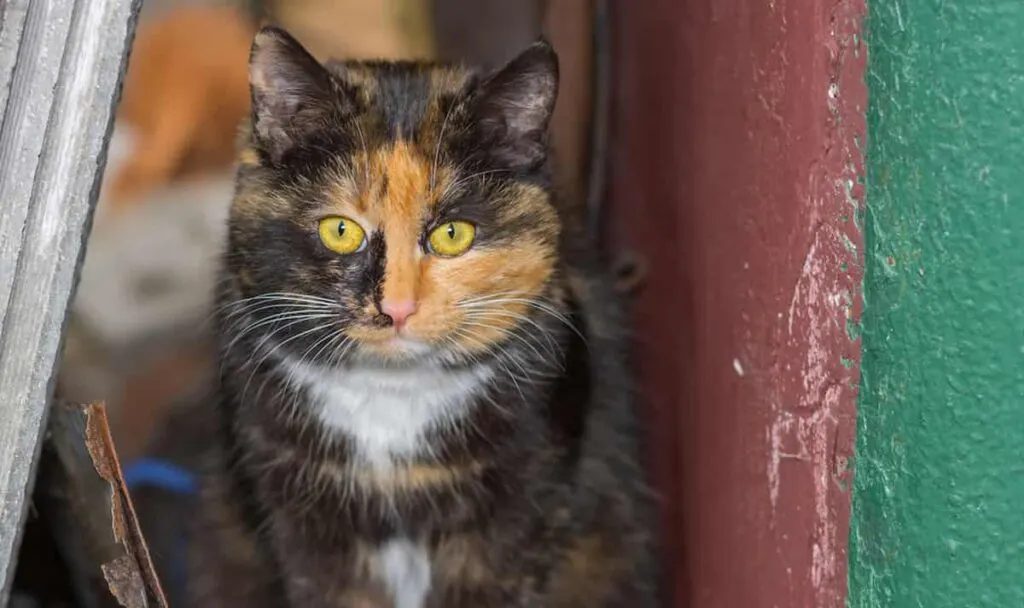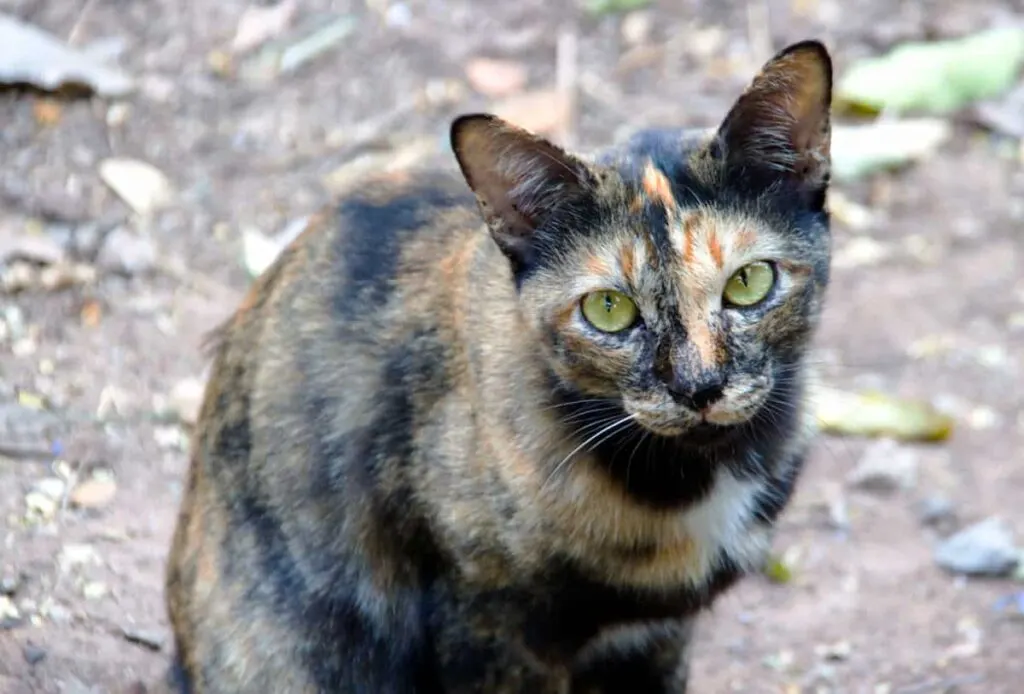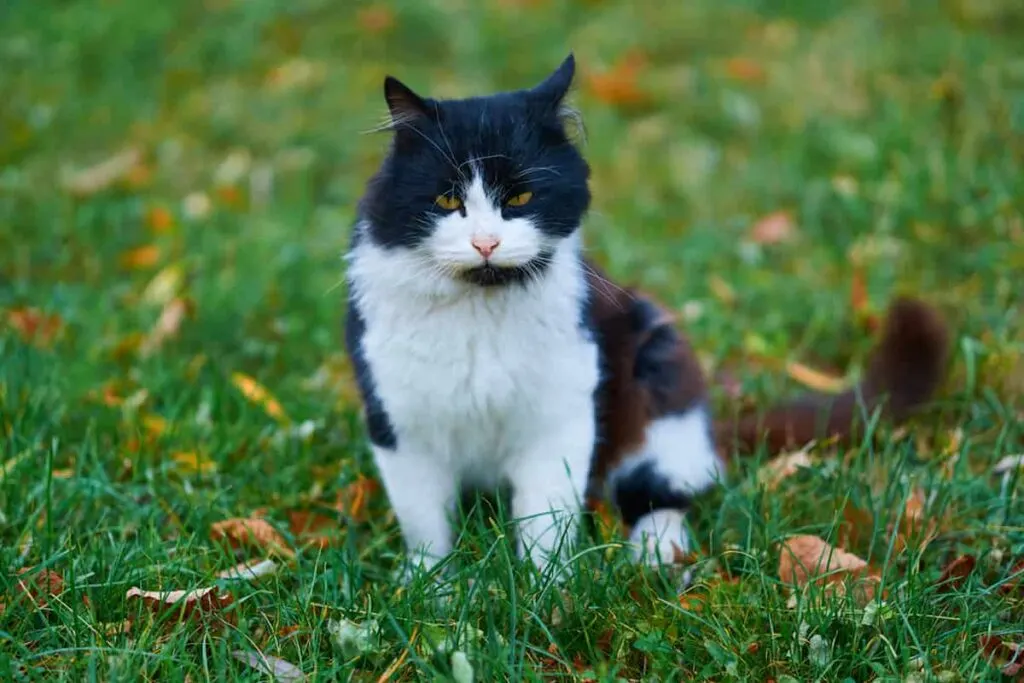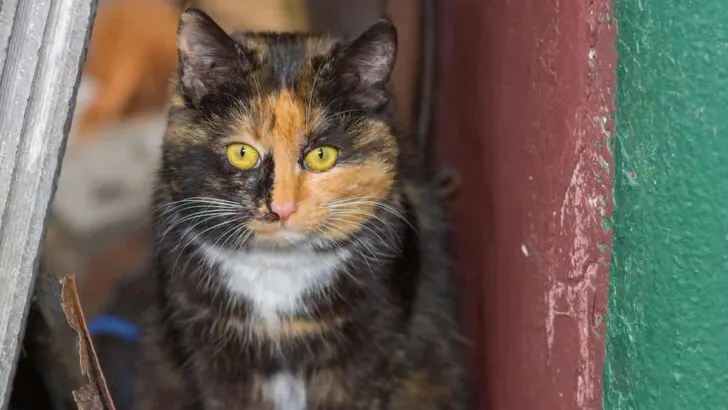Owning a cat has been a great joy for us; however, it’s a ton of work sometimes. When you think about it, domestic cats typically rely on their owners for food, shelter, and medical care as well as attention!
This got me thinking about those cats that don’t have humans there to take care of those tasks for them. So, how do cats survive on their own?
It primarily comes down to their natural instincts and ability to adapt to their environment. Outdoor cats are skilled in hunting techniques, seeking out shelter, and establishing themselves with dominance. These techniques can help cats survive on their own without needing to be domesticated.
Despite their amazing skills, outdoor cats, whether feral or owned, face various challenges regarding survival. They must find their own food, water, and shelter and are also at risk of injury or illness. We’ll get into all of these points next!

Hunting and Feeding
As natural predators, cats have evolved to be skilled hunters. Their hunting behavior is instinctual and is driven by their need to survive. Let’s look at some of the techniques they use and the types of prey they go after.
Hunting Techniques
Cats are known for their stealth and agility, which are essential for hunting success. They use a variety of techniques to catch their prey, including:
- Stalking: Cats often stalk their prey from a distance, using their keen eyesight to follow their movements. They will move slowly and carefully, trying to get as close as possible without being noticed.
- Pouncing: Once they are close enough, cats will pounce on their prey with lightning speed. They use their powerful hind legs to launch themselves into the air and their sharp claws to grab and hold onto their prey.
- Chasing: Some cats, like cheetahs, are built for speed and will chase their prey over long distances. They use their incredible speed and endurance to wear down their prey until they can catch it.
Types of Prey
Cats are opportunistic hunters and will go after various prey, depending on what is available in their environment. Some of the most common types of prey include:
| Type of Prey | Description |
|---|---|
| Birds | Cats are natural bird hunters who go after everything from small songbirds to larger birds like pigeons and seagulls. |
| Small mammals | Cats will hunt rodents like mice and rats and other small mammals like rabbits and squirrels. |
| Reptiles and amphibians | Cats will sometimes go after reptiles like lizards, snakes, frogs, and other amphibians. |
| Insects | Cats will hunt insects like moths, beetles, and grasshoppers. |
Overall, cats are skilled hunters and are able to survive on their own in the wild. Their hunting behavior is instinctual and is driven by their need to find food and survive.

Shelter and Territory
For a cat to survive out in the wild, they need proper shelter. Due to a cat’s ability to fit into tight spaces and stealthy nature, they are experts at seeking out suitable locations.
Types of Shelter
Outdoor cats need shelter to survive harsh weather conditions and protect themselves from predators. They can find shelter in various places, including:
- Abandoned buildings or sheds
- Under decks or porches
- Bushes or dense foliage
- Car engines or hoods
- Cardboard boxes or other makeshift structures
Territorial Behavior
Cats are territorial animals, and outdoor cats defend their territory fiercely. They mark their territory with urine, feces, and scratching to communicate with other cats. Male cats are incredibly territorial and will fight with other males to defend their territory and mating rights.
Outdoor cats also form colonies with related females who find shelter, nurture their young, search for food, and defend their territory as a family. The size of the colonies varies, but some have reported them being as large as several dozen cats.
It’s vital to respect outdoor cats’ territorial behavior and not interfere with their colonies. If you notice a colony of cats in your area, consider contacting a local animal rescue group to help manage the colony through trap-neuter-return programs.

Social Behavior
Cats are known to be solitary animals, but they still have social behaviors that help them survive on their own. This section will discuss two important aspects of a cat’s social behavior: Communication and Hierarchy.
Communication
One crucial element of survival for cats is communication. Through this, they can reach out to other cats to signal their need for something, impose their will, and much more. They’ll also communicate through several means, including body language, vocalizations, and scent marking.
Some body language you may see might include arching their back and puffing up their fur to appear larger when feeling threatened. They also use their tails to communicate, such as twitching their tail when they are excited or flicking them when annoyed.
When it comes to scent markings, they use scent glands on their faces, paws, and tails to mark their territory and communicate with other cats. By leaving their scent, they can signal to other cats that they have been in a particular area and establish their territory.
Hierarchy
Cats are also known for their hierarchical social structure. While they are not pack animals like dogs, they do establish a pecking order within their social groups. This hierarchy is based on various factors, such as age, gender, and personality.
Female cats are known to be more dominant than males, and older cats are typically higher in the hierarchy than younger cats. Personality also plays a role, as more confident cats tend to be higher in the hierarchy than shy or timid cats.
Cats establish their hierarchy through various means, such as physical aggression or simply assert dominance through body language. They may also use vocalizations to establish their dominance, such as growling or hissing.
A cat’s social behavior plays a crucial role in its survival. Cats can coexist peacefully and thrive in their environment by communicating with each other and establishing a hierarchy.

Health and Safety
Health is the number one concern with cats who have to survive on their own. Outdoor cats are especially susceptible to disease, infections, and severe injuries. Here are some of the common health issues they may face, as well as some self-defense mechanisms that they can use when things get dicey.
Common Health Issues
As independent creatures, cats are generally able to take care of themselves. However, they are still susceptible to several health issues, some of which can be serious. Here are some of the most common health issues that outdoor cats may face:
- Parasites: Fleas, ticks, and other parasites can cause various health problems for cats, including skin irritations, anemia, and the transmission of diseases.
- Injuries: Outdoor cats risk being hit by cars, attacked by other animals, or getting into fights with other cats. These injuries range from minor scratches to serious wounds requiring veterinary attention.
- Diseases: Outdoor cats are more likely to be exposed to diseases such as feline leukemia virus (FeLV) and feline immunodeficiency virus (FIV). These diseases can weaken a cat’s immune system and make them more susceptible to other illnesses.
It’s important to keep your cat up-to-date on their vaccinations and to schedule regular check-ups with your veterinarian to catch any health issues early.
Self-Defense Mechanisms
Cats have several self-defense mechanisms that help them stay safe in the wild. Here are a few of the most common:
- Claws: A cat’s claws are its primary defense mechanism. They can use them to climb trees, defend themselves against predators, and catch prey.
- Speed and agility: Cats are incredibly fast and agile, which allows them to outrun predators and escape dangerous situations.
- Hiding: Cats are masters at hiding, which allows them to avoid predator detection. With their stealth, they can easily coexist among other predators undetected in some cases. It’s an essential skill to have if you’re a cat!
- Fighting: While cats prefer to avoid confrontation, they can defend themselves if necessary. They may hiss, growl, or use their claws and teeth to fight off predators or other cats.
The Takeaway
As you can see, cats are well-equipped to survive on their own. They’ve got the survival skills necessary to gather their own food, and water, and seek out shelter. They also have the ability to defend themselves if necessary.
While outdoor cats can survive on their own without being domesticated, their survival rates are sadly much lower than an indoor housecat. That’s understandable as environmental factors and diseases/infections are more prevalent outside a controlled home environment.

My name is James, and welcome to FAQCats!
Along with our team of cat owners, expert pet enthusiasts, and pet professionals, we aim to write engaging helpful, engaging content about cats. At FAQCats we strive to provide content that’s accurate and fun to read. Our team writes about everything related to cats; even the most complex of topics. Through extensive research and caring for our own fur-pals, we’re able to provide something cat owners worldwide will love. Have a look around, and leave us feedback anytime!

